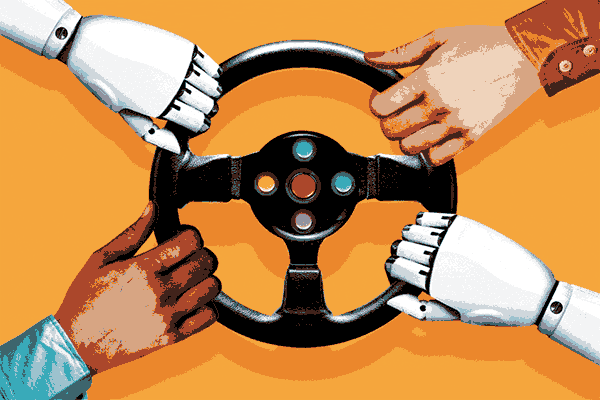5 Hi-Tech Safety Features to Look For in a New Car
Today's automakers are prioritizing features like this that not only protect drivers who get into accidents, but also help avoid accidents altogether. (Sponsor: GEICO)

You’re on the highway, about to change lanes — a check of the mirrors, a look over your shoulder. Blinker on, you start to make your move, when a light on the side mirror flashes: Someone in your blind spot! You pull back into your lane, relieved.
Car safety features like blind-spot monitoring have been available, or even standard, on luxury cars for several years. But as the government and manufacturers have recognized their importance, they’ve popped up on lower-priced vehicles as well.
Fortunately, some of these high-tech safety features are becoming requirements on all new cars. According to Richard Reina, product training director at CARiD.com, today’s automakers are prioritizing features like this that not only protect drivers who get into accidents, but also help avoid accidents altogether.
Not all of these features are standard on all cars yet, but they may be offered as an optional upgrade. Few cost more than $750 per vehicle, making them a solid peace-of-mind investment. After all, paying a little more now helps create a safer ride for you, your passengers and others on the road, for years to come.
Automatic Braking Systems
Automatic emergency braking systems stop or drastically slow the car when an oncoming collision is detected — an essential safety feature, according to Reina. “Even for good drivers,” he says, “this will help avoid accidents should a person or car suddenly come into your path through no fault of your own.” Although automatic brakes are standard in only about 10 percent of new cars currently sold, you’ll be seeing this feature more often. Twenty major car manufacturers recently pledged to make automatic braking systems standard in virtually all new-model cars by 2022, and installation of the technology will reach almost all trucks by 2025.
Blind-Spot Monitoring
Using either video data or radar, a blind-spot system keeps careful watch over the areas drivers can’t see from their rearview or side mirrors. If it detects a car getting a little too close for comfort, it alerts the driver with a series of beeps or visual cues. In some advanced systems, the cars can even move themselves to a safer distance. Blind-spot monitoring is an especially worthy investment for larger vehicles like SUVs or minivans, or for anyone who does a lot of highway travel. In the coming years, most vehicles are likely to have this as a standard safety feature or as a more affordable option.
Backup Camera
The backup camera concept was introduced in the 1950s, went into production in the 1990s, and has proved to be such an effective safety feature that it will be mandatory for all cars manufactured starting in May 2018. The camera turns on when the vehicle is put in reverse, showing an image — on a dashboard or rearview-mirror screen — of what’s behind the car. The extra perspective adds a layer of protection to checking your mirrors and looking over your shoulder.
Rear Cross-Traffic Warning
This feature adds another layer to the backup camera. Rear cross-traffic warning systems monitor the area behind the car and will issue alerts if anything is detected while you’re backing up. Basically a more advanced form of the technology used in blind-spot monitoring, it’s also hugely popular: Drivers say this feature has already worked wonders in preventing fender benders.
Lane-Keeping System
While lane-departure warning systems usually issue a few beeps when they detect the car drifting, lane-keeping assist systems actually take control of the car and steer it gently back to its lane. According to Reina, these systems should reduce the number of collisions that result from cars leaving their lanes.
Now that you know how new car technology can help keep you safe, make sure your car is covered with the right auto insurance. Get a fast, free quote on quality coverage today.
